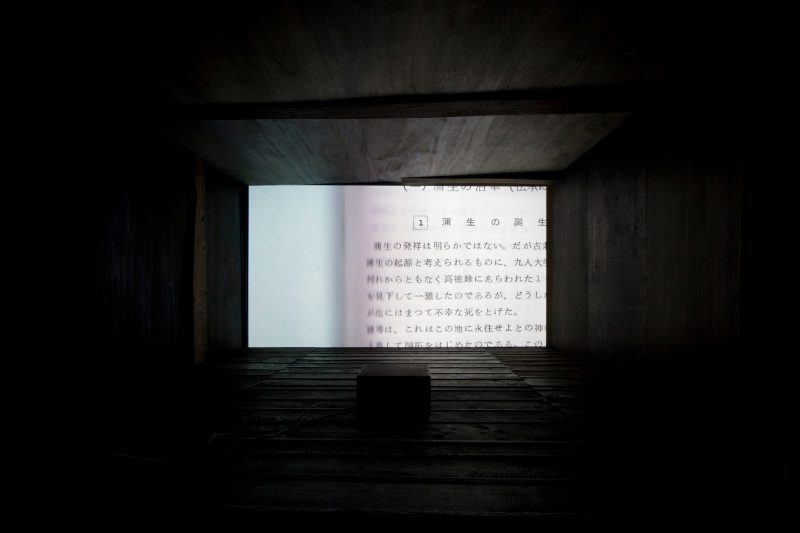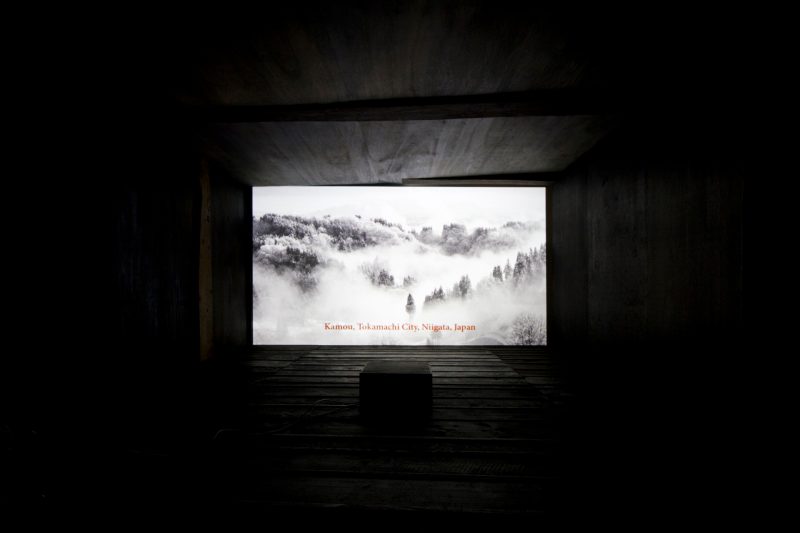Kamou As Shown in the Photographs of 13 Residents (Excerpt)
Single-channel video installation | HD video, sound, loop | 4:44 min | 345 x 180 cm (11.3 x 6 ft) | 2015
Through the video, I visualize the physical and emotional distance between the residents of Kamou, the community in which Echigo-Tsumari Art Triennale 2015 is held, and myself, the participating artist. Kamou is a very small, isolated village in Matsudai, Japan with a stagnant population of approximately 4,000, so it was difficult to locate references on the Internet or through books. Also, according to the institution, 40% of the population of the village is above 65 years old — most do not use emails or social network services. Thus, the only way for me to communicate with them was through emails with Echigo-Tsumari Art Triennale in English.
I approached this project with a specific set of questions: Is it possible to create “community-specific” art without being able to directly communicate with the community? Instead of building a temporary, made-up relationship with the community for an art project, could I create an artwork about the community from the point of view of a stranger, reinforcing the limitation in communication and cultural difference? If so, what kind of cultural fantasy and inherent preconception would it create and reveal?
In pursuing research, I requested through Echigo-Tsumari Art Triennale that the residents of Kamou provide me with photographs that best represent their view of the village. 13 residents participated in the project upon request. Among those received, Mr. Kosakai gave me a scan of the first issue of the village newspaper, featuring a story that describes the mythic origins of the village. Although an unexpected source of information about the village, I was intrigued by the numinous content of the story.
Based on the collected research, I created a video that delivers the myth of the community, with the personal photographs of all participants, and sounds to index my location. Informing the video are computer sounds, such as turning it on and off, clicking, and trashing items, as well as processes of digital photo manipulation exhibited through acts of cutting, erasing and reassembling to match the story. In the final video, there is a delicate movement back and forth between scenes to harmonize fact with absurdity. In this way, I deliberately expose one of the dangers inherent to the genre of community art: the insensitive objectification or sometimes “romanticization” of an unfamiliar culture without in-depth interactions with one another.


